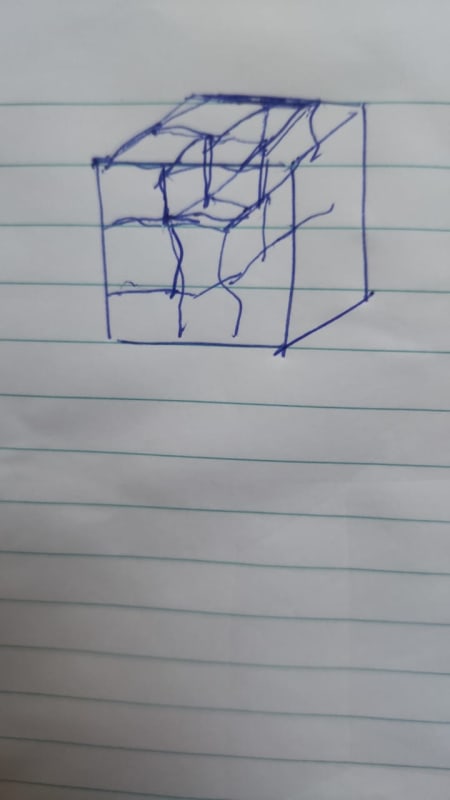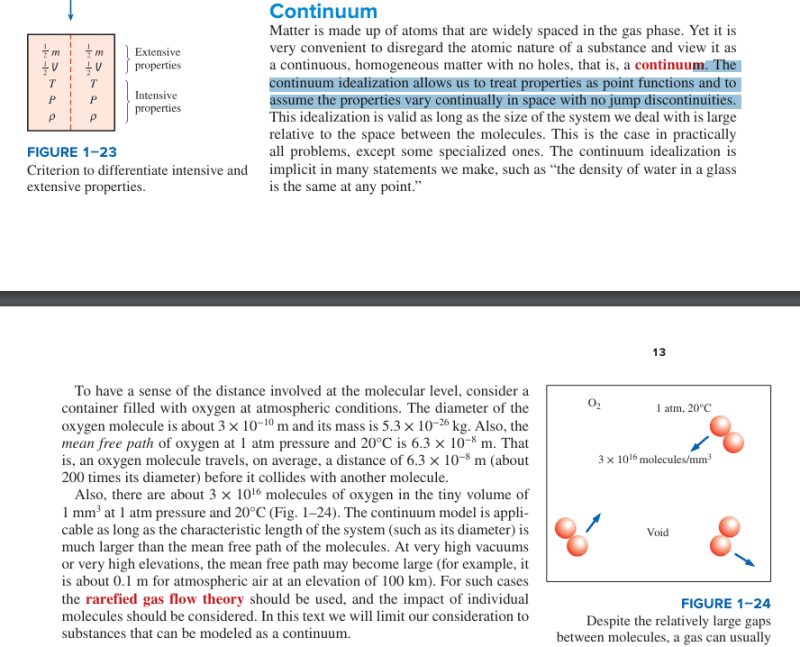AAMAIK
Chemical
- Jun 2, 2024
- 3
Are we motivated to apply the continuum model because, when we view a substance in the gaseous phase on a molecular scale, the molecules are constantly and randomly moving in all directions? If we had tools for measuring intensive properties at different points, these properties would not assume a uniform value if it was isolated system. I said isolated system because I am removing the exchange of matter and energy to and from the system. Additionally, for the same point at different times, the properties would also vary. At some points, there could be no molecules occupying the infinitesimal volume we are considering, which means the property is not continuous. Is this why we need the continuum model to characterize the system with a single value for a property?
Why is it valid as long as the size of the system is large compared to the void between the molecules?
Suppose we consider the system to be the cube in the image below. If we partition the volume of the cube into infinitesimal volumes that add up to the cube volume. If we filled the system with a gas and isolated it from its surroundings. Also, the volume of the system consists of the volume occupied by the gas molecules and the volume of the void between the molecules. Now, lets measure an extensive and an intensive property for each infinitesimal volume within the system at one instant. Suppose the volume of voids between the molecules is larger compared to the volume of molecules. More infinitesimal volume may not contain gas molecules at all, leading to exclusion when calculating the average property values of all infinitesimal volumes. How is this average misleading in the characterization of the system?

Why is it valid as long as the size of the system is large compared to the void between the molecules?
Suppose we consider the system to be the cube in the image below. If we partition the volume of the cube into infinitesimal volumes that add up to the cube volume. If we filled the system with a gas and isolated it from its surroundings. Also, the volume of the system consists of the volume occupied by the gas molecules and the volume of the void between the molecules. Now, lets measure an extensive and an intensive property for each infinitesimal volume within the system at one instant. Suppose the volume of voids between the molecules is larger compared to the volume of molecules. More infinitesimal volume may not contain gas molecules at all, leading to exclusion when calculating the average property values of all infinitesimal volumes. How is this average misleading in the characterization of the system?


